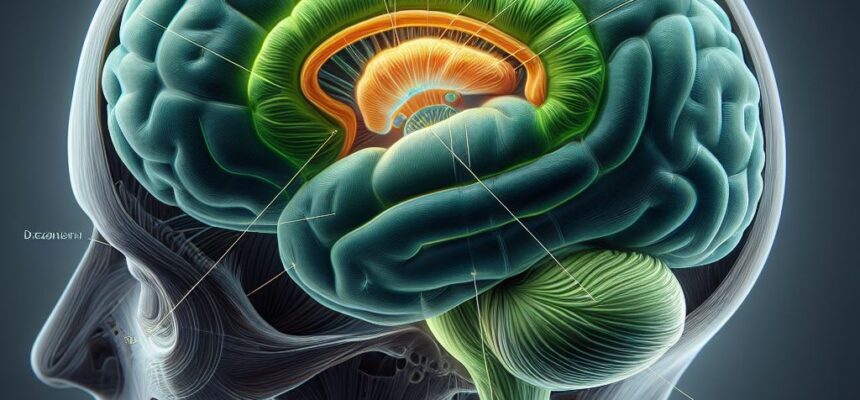Chorea is a movement disorder characterized by involuntary, rapid, and unpredictable muscle contractions. Can be a genetic disorder or induced by medications or toxins or associated with vascular accidents, malformations or tumors.
Symptoms of chorea can include:
- Muscle contractions with no regular rhythm
- Abnormal gait
- Mild fidgetiness, clumsiness, forgetfulness
- Difficulty thinking and depression
- Severe cases may involve difficulty swallowing and talking.
Huntington’s Disease
Etiology: Huntington’s disease is a genetic disorder caused by a defect in the HTT gene. It is inherited in an autosomal dominant pattern, which means that a person only needs to inherit one copy of the defective gene from one parent to develop the disease. If one parent has the Huntington’s disease gene, each child has a 50% chance of inheriting that gene.
The onset of symptoms for Huntington’s disease typically occurs in adulthood, with most individuals beginning to show signs in their forties and fifties. However, the range of onset can be quite broad. About 10% of cases are classified as Juvenile Huntington’s disease, where symptoms manifest before the age of 20. There are also instances where symptoms may not appear until after the age of 60. It’s important to note that subtle changes can arise much earlier than the full onset of symptoms, and the exact age can vary widely between individuals.
Symptoms:
The first symptoms of Huntington’s disease can vary between individuals, but they often include a combination of movement, cognitive, and psychiatric disorders.
-
Movement disorders:
- Chorea: Involuntary jerking or writhing movements.
- Tremors.
- Rigidity or contracture of muscles.
- Slow or abnormal eye movements.
- Impaired gait, posture, and balance.
- Difficulty with speech and/or swallowing.
-
Cognitive disorders:
- Problems with organizing, prioritizing, or focusing on tasks.
- Difficulty in learning new information and finding words to speak.
- Lack of impulse control.
- Difficulty with decision-making and reasoning.
-
Psychiatric disorders:
- Depression and/or mania.
- Irritability.
- Social withdrawal.
- Insomnia.
- Fatigue.
- Suicidal thoughts or tendencies.
- Apathy.
Often cognitive and psychiatric disorders can present 10-15 years prior to the movement disorders. These symptoms are progressive and may start subtly before becoming more apparent. It’s important for individuals who notice such symptoms and have a family history of Huntington’s disease to seek medical advice for proper diagnosis and support.
Diagnosis:
- Based on medical history, physical exam, neurological and psychiatric assessments
- Brain imaging (CT, MRI).
MRI findings typically include:
- Atrophy of the caudate nucleus: This is the most striking and well-known feature. The caudate nucleus, which plays a role in motor control, is significantly reduced in size.
- Enlargement of the frontal horns of the lateral ventricles: As the caudate nucleus atrophies, the nearby ventricles often appear larger than normal.
- Other affected areas: While the caudate nucleus is the primary site of atrophy, other deep grey matter structures and, to a lesser extent, white matter can also be involved.
These changes are progressive and correlate with the clinical symptoms of the disease, such as chorea, cognitive impairment, and psychiatric disturbances. MRI is preferred for its high spatial and contrast resolution, which allows for detailed visualization of these morphological changes.
- Genetic testing.
Evolution:
- Progressive degeneration of nerve cells in the basal ganglia and other parts of the brain.
- Worsening motor, cognitive, and psychiatric symptoms over time.
Treatment is symptomatic:
- Medications: Tetrabenazine, antipsychotics, antidepressants
- Therapies: Psychotherapy, speech and physical therapy
- Lifestyle changes and supportive care.
Other choreic syndromes
While HD is the most recognized cause, due to its autosomal dominant inheritance and the presence of a CAG repeat expansion in the HTT gene, there are other conditions, known as Huntington’s disease-like (HDL) syndromes, which can present with similar symptoms. These HDL disorders are rare and account for about 1% of cases presenting with an HD phenotype.
It’s important to be aware that certain medications can induce chorea, leading to diagnostic and therapeutic challenges.
Medication-induced chorea typically occurs under two main circumstances:
- In psychotic patients treated with typical neuroleptics.
- In Parkinsonian patients undergoing long-term treatment with levodopa.
The onset of chorea can be acute, subacute, or insidious, and the involuntary movements may present in isolation or as part of a more generalized neurological or systemic condition. The relationship between drug intake and the appearance of chorea is not always clear, especially in cases of tardive dyskinesia where patients are not psychotic and receive dopamine blockers for other conditions.
A wide variety of drugs have been implicated in the induction of chorea, including:
- Central dopamine-receptor-blocking agents.
- Anticonvulsants.
- Antidepressants.
- Anticholinergics.
- Drugs of abuse.
- Medications affecting serotonin, noradrenalin, and cholinergic neurotransmission.
The temporal relationship between drug intake and the onset of movements is crucial for diagnosis. In some cases, even discontinuing the drug might not stop the movement disorder, as some of them are persistent or even permanent.
References:
1 bmj.com
2 medicalnewstoday.com
3 medlink.com
4 webmd.com
5 uptodate.com
6 doi.org
7 https://hdsa.org/what-is-hd/age-of-onset/
8 link.springer.com
